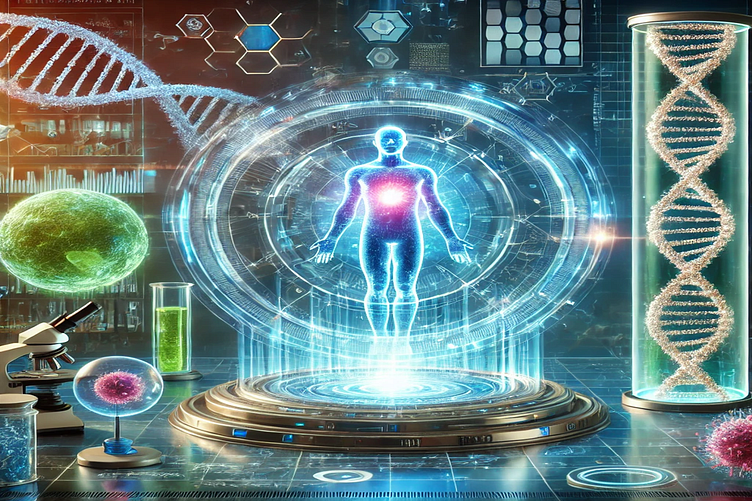Regenerative Medicine: A Promising Approach to Wellness?
This design is generated with the help of ChatGPT
Regenerative medicine is emerging as a groundbreaking field in healthcare, offering the potential to heal or replace damaged tissues and organs. By leveraging the body’s natural ability to repair itself, this innovative approach seeks to address various chronic diseases, injuries, and age-related conditions. But what exactly does regenerative medicine involve, and how can it transform our approach to wellness?
What is Regenerative Medicine?
At its core, regenerative medicine focuses on restoring normal function by repairing or replacing damaged cells, tissues, and organs. This field incorporates a variety of advanced therapies, including stem cell treatments, tissue engineering, and gene therapy. One of the key goals is to stimulate the body's healing mechanisms, fostering recovery in ways traditional medicine may not achieve.
Types of Regenerative Medicine
Regenerative medicine spans several key areas:
Stem Cell Therapy: Stem cells have the unique ability to develop into various types of cells, making them instrumental in repairing damaged tissues. They are used in conditions like spinal cord injuries, heart diseases, and diabetes.
Tissue Engineering: This involves creating bioartificial tissues and organs in the lab, which can be transplanted to replace damaged ones. Tissue engineering holds immense promise for patients awaiting organ transplants.
Gene Therapy: By modifying or replacing faulty genes, gene therapy targets the root causes of genetic disorders, offering a potential cure for conditions previously deemed untreatable.
Biological Therapies: This includes treatments like platelet-rich plasma (PRP) and NAD+ IV therapy, which promote cellular repair and rejuvenation, aiding recovery and improving overall health.
Potential Benefits of Regenerative Medicine
The benefits of regenerative medicine extend far beyond traditional approaches. It offers the promise of personalized treatments tailored to individual patients. For example:
Improved Healing and Recovery: Techniques like NAD+ IV therapy can help accelerate recovery by promoting cellular energy production and reducing oxidative stress.
Reduced Reliance on Transplants: With advancements in tissue engineering, patients may no longer need to rely on donor organs, reducing the risks of rejection and complications.
Chronic Disease Management: Regenerative therapies have shown potential in treating chronic conditions like arthritis and neurodegenerative diseases, offering hope for long-term relief.
Current Research and Challenges
Despite its potential, regenerative medicine is still in its infancy. Researchers are conducting clinical trials to evaluate the safety and efficacy of these therapies. While the results are promising, challenges remain, such as:
Ethical Concerns: The use of embryonic stem cells has sparked debates about the ethical implications of some regenerative treatments.
High Costs: Many regenerative therapies are expensive, making them inaccessible to a broad population.
A Look Ahead
Regenerative medicine represents a paradigm shift in healthcare, emphasizing healing rather than symptom management. As research advances, therapies like NAD+ IV therapy are becoming more accessible, allowing individuals to explore holistic approaches to wellness. With continued innovation, this field has the potential to redefine how we approach aging, chronic illness, and recovery.
In conclusion, regenerative medicine offers hope for a healthier future by harnessing the power of science to heal from within. As we navigate the challenges and opportunities, this exciting field could transform our lives, one cell at a time.
